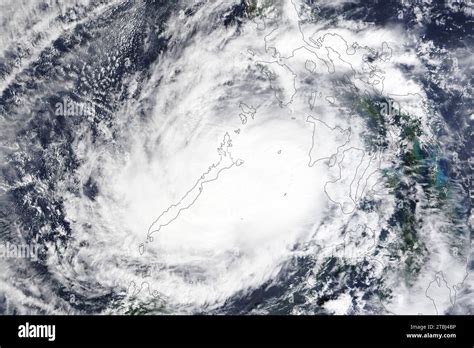
Typhoon Uwan: Super Typhoon Hits Storm-Weary Philippines
Typhoon Uwan Strikes the Philippines Amid Ongoing Recovery
Just days after Typhoon Kalmaegi devastated the Philippines, another powerful storm has made landfall. Super Typhoon Uwan, known internationally as Typhoon Fung Wong, has intensified into a catastrophic weather event, forcing massive evacuations and threatening regions still reeling from previous disasters. With sustained winds reaching 185 km/h (115 mph) and gusts up to 230 km/h (143 mph), this super typhoon is testing the resilience of a nation already declared under a state of calamity.
Life-Threatening Conditions and Evacuations
The Philippines' meteorological agency PAGASA upgraded Uwan to super typhoon status as it approached the country's eastern Bicol region on November 8, 2025. Coastal areas like Catanduanes and Aurora province faced immediate threats, with officials urging residents to evacuate to higher ground before the storm's peak. Over 900,000 people have been relocated across 11 regions, with emergency shelters, including churches and evacuation centers, overwhelmed by displaced families.
"We decided to evacuate because the recent typhoon brought floods in our area, and now I just want to keep my family safe," shared Norlito Dugan, a resident of Sorsogon seeking shelter. Similarly, Maxine Dugan expressed fear of the "huge waves" near her coastal home. These personal accounts highlight the urgency of the situation as communities brace for violent winds, destructive storm surges, and potential flash floods.
Disrupted Recovery and Exhausted Resources
Uwan's arrival has critically hampered ongoing recovery efforts from Typhoon Kalmaegi, which killed at least 188 people in the Philippines and five in Vietnam just days earlier. Rescue operations in Cebu and Davao have been suspended, with resources redirected to prepare for the new storm. "Our funds are starting to get exhausted because of the number of emergencies," Butch Meily, president of the Philippine Disaster Resilience Foundation, noted. "People are a little shellshocked."
The storm's massive 1,500 km (932-mile) circulation has already caused damage in Catanduanes province, with over 300 domestic and international flights canceled. Schools have shifted to virtual learning, and authorities warn of severe flooding in Manila and eastern Luzon, where up to 200 mm of rainfall is expected.
Climate Change Intensifies Typhoon Threats
While the Philippines is no stranger to typhoons—averaging 20 cyclones annually—experts link the increasing intensity of storms like Uwan to climate change. Warmer oceans and atmospheric conditions fueled by human-caused global warming provide more energy for cyclones to strengthen, leading to higher wind speeds, heavier rainfall, and greater coastal flooding risks.
"In the past, we used to focus on where the storm would make landfall," Meily explained. "But now we have to consider the rain band because it’s so wide in scope that areas far away from where the storm makes land are getting flooded." This shift underscores the evolving challenge of disaster preparedness in a warming world.
A Nation's Unyielding Resilience
Despite the relentless series of disasters—four major typhoons and two earthquakes in seven weeks—the Philippines demonstrates remarkable resilience. The government has activated emergency protocols, expanding access to funds and resources for affected communities. As Uweakens over land but continues its path across Luzon, the focus remains on protecting lives and restoring infrastructure. The coming days will reveal the true extent of the damage, but one thing is clear: the spirit of the Filipino people remains unbroken in the face of nature's fury.
"The Philippines is one of Asia’s most flood-prone countries, but this year it has also been mired in a massive corruption scandal involving flood control projects... Scientists have long warned the human-caused climate crisis... has only exacerbated the scale and intensity of regional storms."
— CNN Report on Typhoon Uwan
Share this article
Dr. David Chen
Science correspondent with a Ph.D. in astrophysics, passionate about making complex scientific discoveries accessible to all.